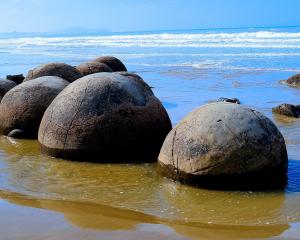The largest eagle to have lived returned to the hills above Macraes village yesterday as a 750kg stainless steel sculpture arrived by helicopter to take pride of place in the Macraes Heritage and Art Park.
The steel Haast Eagle was created by Arrowtown sculptor Mark Hill, over six months, for Oceana Gold New Zealand Ltd as a part of its commitment to leave a legacy "other than mining" for the area.
Oceana Gold tourism development co-ordinator Graham Wilson said the idea for the sculpture began about two years ago when Mr Hill's father, jeweller Michael Hill, visited the site.
Mark Hill's interest in birds was mentioned and the project evolved from there.
Haast's eagle (Harpagornis moorei) was chosen as it was understood to have lived in the South Island, including near Macraes.
It became extinct more than 500 years ago.
The bird is known to have attacked and eaten moa. It weighed up to 15kg and had a wingspan of up to 3m.
The sculpture is 7m wide and has a wingspan of 12m.
Mr Hill said it was made from stainless steel tube, with the hardest part "trying to get his head around" making such a large piece.
He decided the best way to get the sculpture from his studio in Arrowtown would be by helicopter, the cost part of the commission.
Other transport would have required dismantling the sculpture and reassembling it on site.
Yesterday, about 10.30am Helicopters Otago picked the sculpture up from outside his shed in Arrowtown and an hour later it was on Fraser's West rock stack, at Macraes.
The sculpture was bolted to a 50-tonne concrete slab. It is designed to withstand winds of up to 170kmh.
Mr Wilson said the eagle was the third instalment of art in the heritage and art park since 2000 and others are planned, including one more in the next 18 months.
Other instalments include billboard sized art works in a paddock below the mine by Gavin Hipkins, of Wellington, and planting called Snow Tussocks, by John Reynolds of Auckland, on the hillside above the historic Presbyterian church.
Oceana Gold plans to open the park to walking visitors next year.












